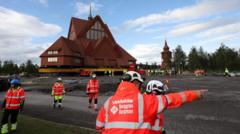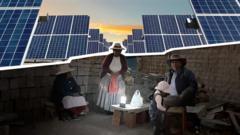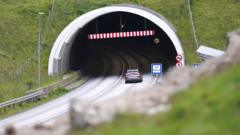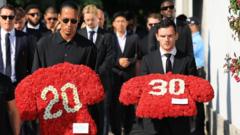This astonishing engineering feat celebrates heritage while addressing infrastructure challenges in Sweden's mining town.
**Historic Move: Kiruna Church Relocates to Preserve Community Heritage**
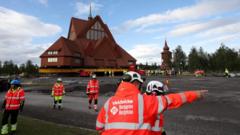
**Historic Move: Kiruna Church Relocates to Preserve Community Heritage**
The iconic Kiruna Church undertakes a monumental two-day relocation due to ground subsidence.
The town of Kiruna, situated in Sweden's Arctic region, is currently witnessing a historic event that has drawn attention from across the globe. A strikingly beautiful church, which has stood for over a century, is undertaking a meticulous two-day journey to a new location approximately 5 kilometers (3 miles) away from its original site. This ambitious relocation is necessitated by ground subsidence attributed to extensive iron ore mining in the area.
Constructed in 1912, the Kiruna Church is a red timber structure that boasts impressive dimensions of 35 meters (115 feet) high and 40 meters wide, weighing in at a hefty 672 tonnes. The operation employs innovative technology, including giant rolling platforms and self-propelled modular transporters, allowing the church to roll to its new home at a maximum speed of 500 meters an hour. This process, which spans two days, has drawn crowds eager to witness this extraordinary engineering achievement.
As noted by culture strategist Sofia Lagerlöf Määttä, the move symbolizes a long-awaited transition for both the church and the community. Project manager Stefan Holmblad Johansson, who has overseen meticulous preparations, emphasizes the significance of this momentous event. "It’s a historic operation, and we don’t have a margin for error," he stated, conveying his confidence in the project's success.
Throughout the past decade, other buildings in Kiruna have been relocated or dismantled to prevent damage from fissures caused by mining activities. While many structures were rebuilt anew, the church is unique in its intact mobility, marking a poignant moment for residents who hold cherished memories tied to the landmark.
As it embarks on this journey, special care is being taken to protect the church’s invaluable interior, including the revered great altar painting crafted by Prince Eugen. Unlike typical artwork that can be easily removed, this piece is affixed to the wall, making its preservation during the move a priority.
The emotional significance of the church’s relocation resonates deeply with the local community. Vicar Lena Tjärnberg has expressed bittersweet feelings regarding the church's departure from its original location while acknowledging the necessity imposed by the mining operations. As thousands of onlookers, including Sweden's King Carl Gustaf, gather along the route, the move is not just an engineering triumph but a testament to the enduring spirit and unity of the Kiruna community.
With live coverage broadcasted as "slow TV," the resettlement of the Kiruna Church transcends mere logistics, becoming a cherished and shared experience of history in motion.
Constructed in 1912, the Kiruna Church is a red timber structure that boasts impressive dimensions of 35 meters (115 feet) high and 40 meters wide, weighing in at a hefty 672 tonnes. The operation employs innovative technology, including giant rolling platforms and self-propelled modular transporters, allowing the church to roll to its new home at a maximum speed of 500 meters an hour. This process, which spans two days, has drawn crowds eager to witness this extraordinary engineering achievement.
As noted by culture strategist Sofia Lagerlöf Määttä, the move symbolizes a long-awaited transition for both the church and the community. Project manager Stefan Holmblad Johansson, who has overseen meticulous preparations, emphasizes the significance of this momentous event. "It’s a historic operation, and we don’t have a margin for error," he stated, conveying his confidence in the project's success.
Throughout the past decade, other buildings in Kiruna have been relocated or dismantled to prevent damage from fissures caused by mining activities. While many structures were rebuilt anew, the church is unique in its intact mobility, marking a poignant moment for residents who hold cherished memories tied to the landmark.
As it embarks on this journey, special care is being taken to protect the church’s invaluable interior, including the revered great altar painting crafted by Prince Eugen. Unlike typical artwork that can be easily removed, this piece is affixed to the wall, making its preservation during the move a priority.
The emotional significance of the church’s relocation resonates deeply with the local community. Vicar Lena Tjärnberg has expressed bittersweet feelings regarding the church's departure from its original location while acknowledging the necessity imposed by the mining operations. As thousands of onlookers, including Sweden's King Carl Gustaf, gather along the route, the move is not just an engineering triumph but a testament to the enduring spirit and unity of the Kiruna community.
With live coverage broadcasted as "slow TV," the resettlement of the Kiruna Church transcends mere logistics, becoming a cherished and shared experience of history in motion.


